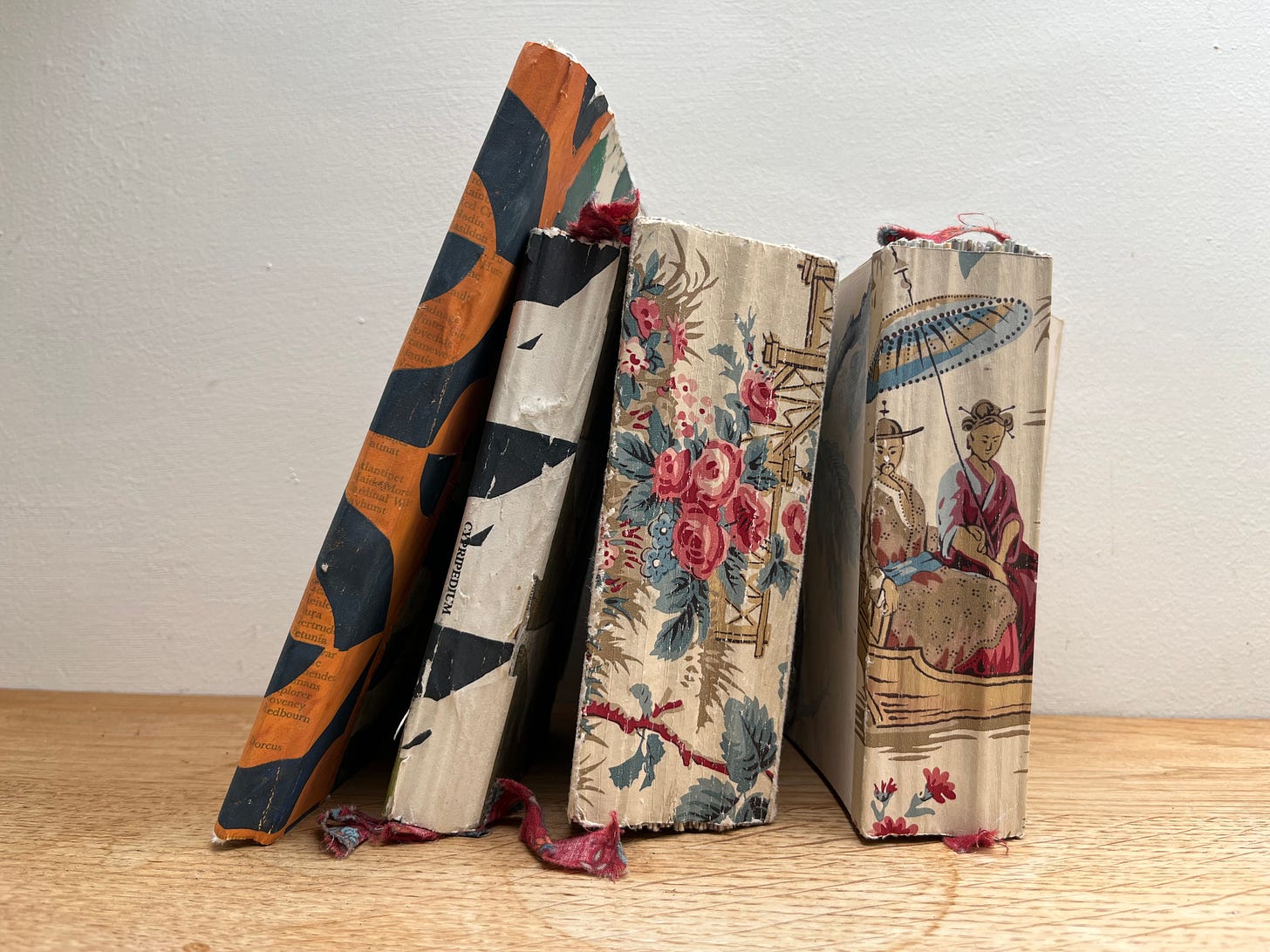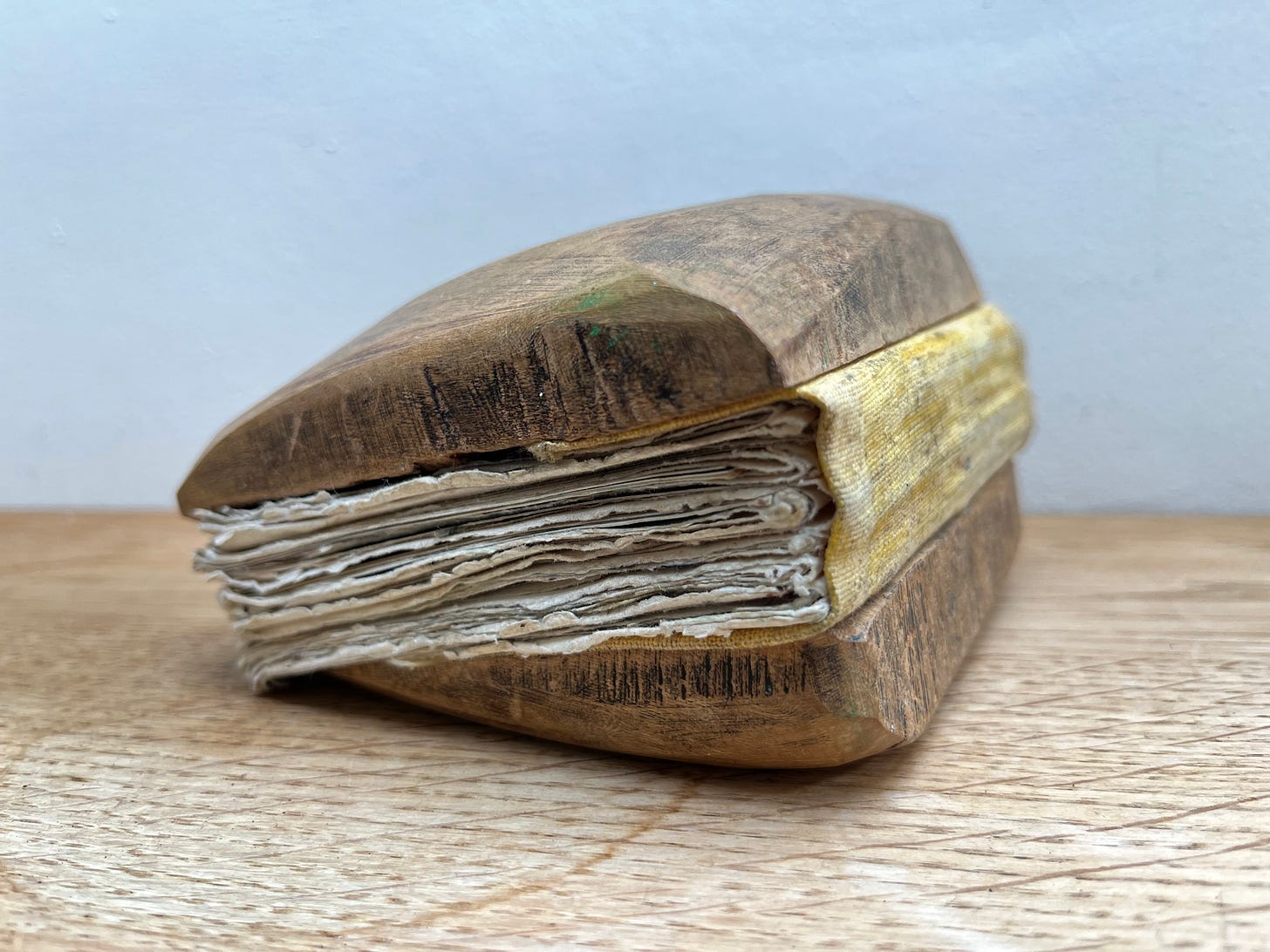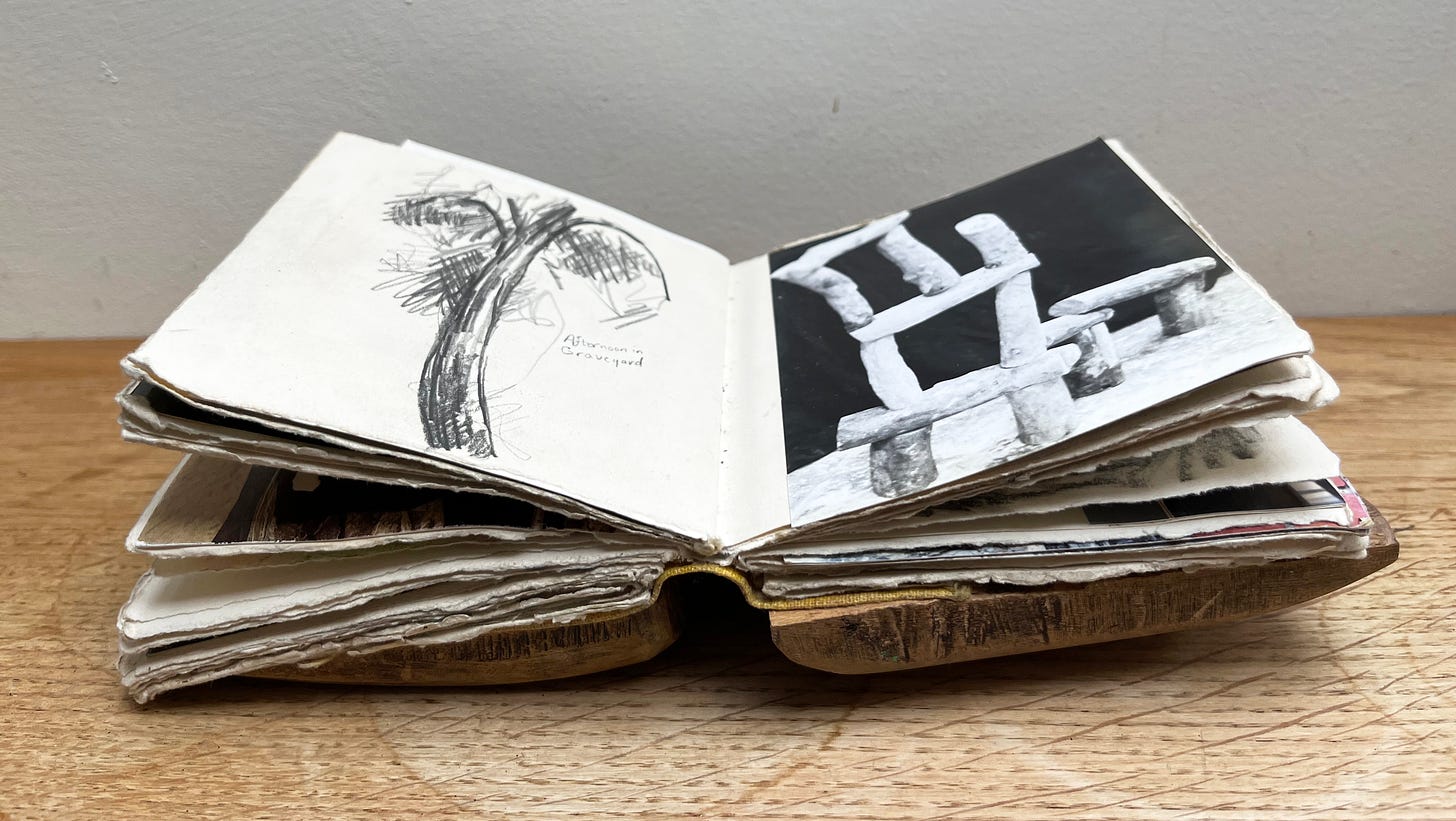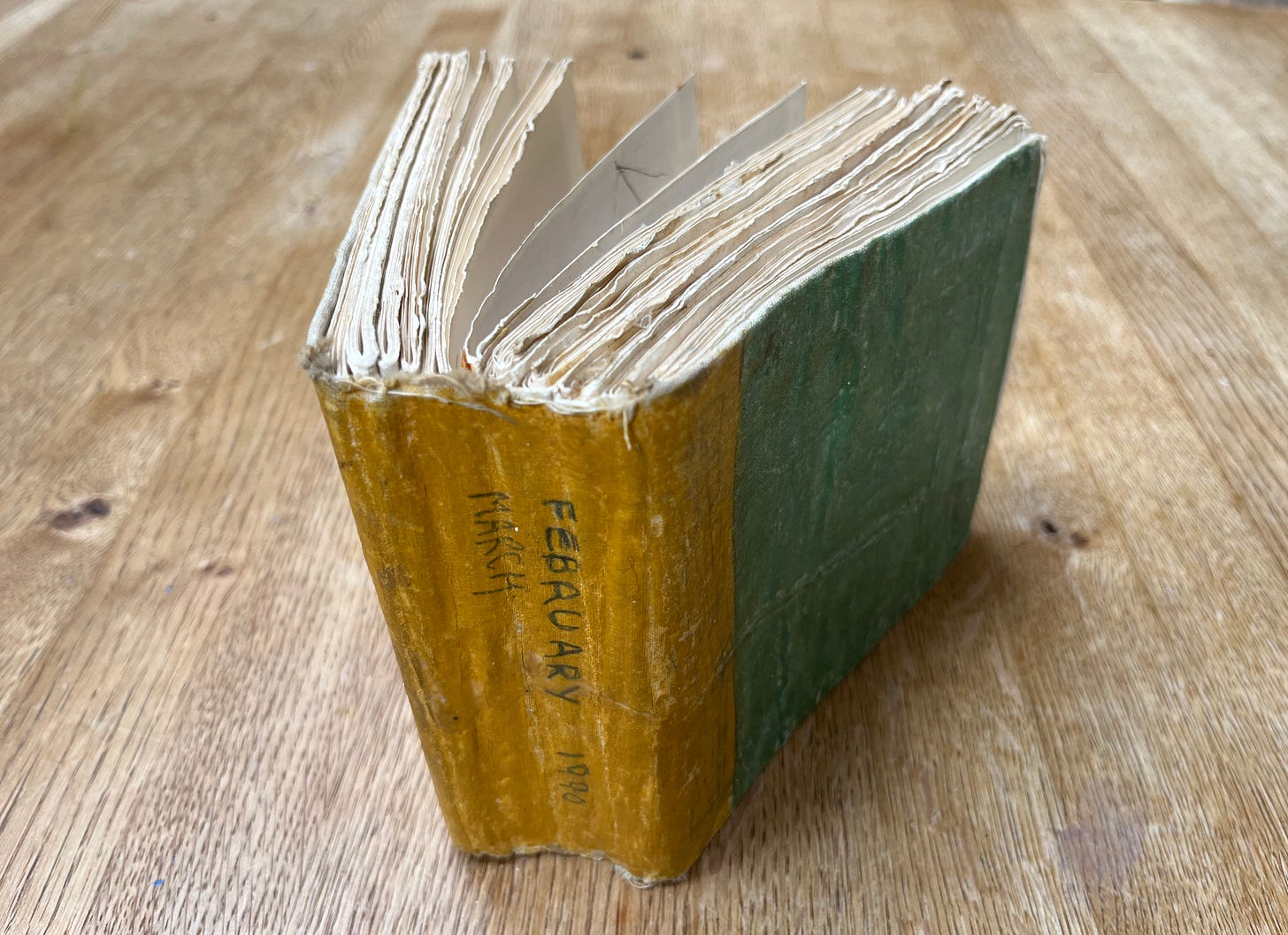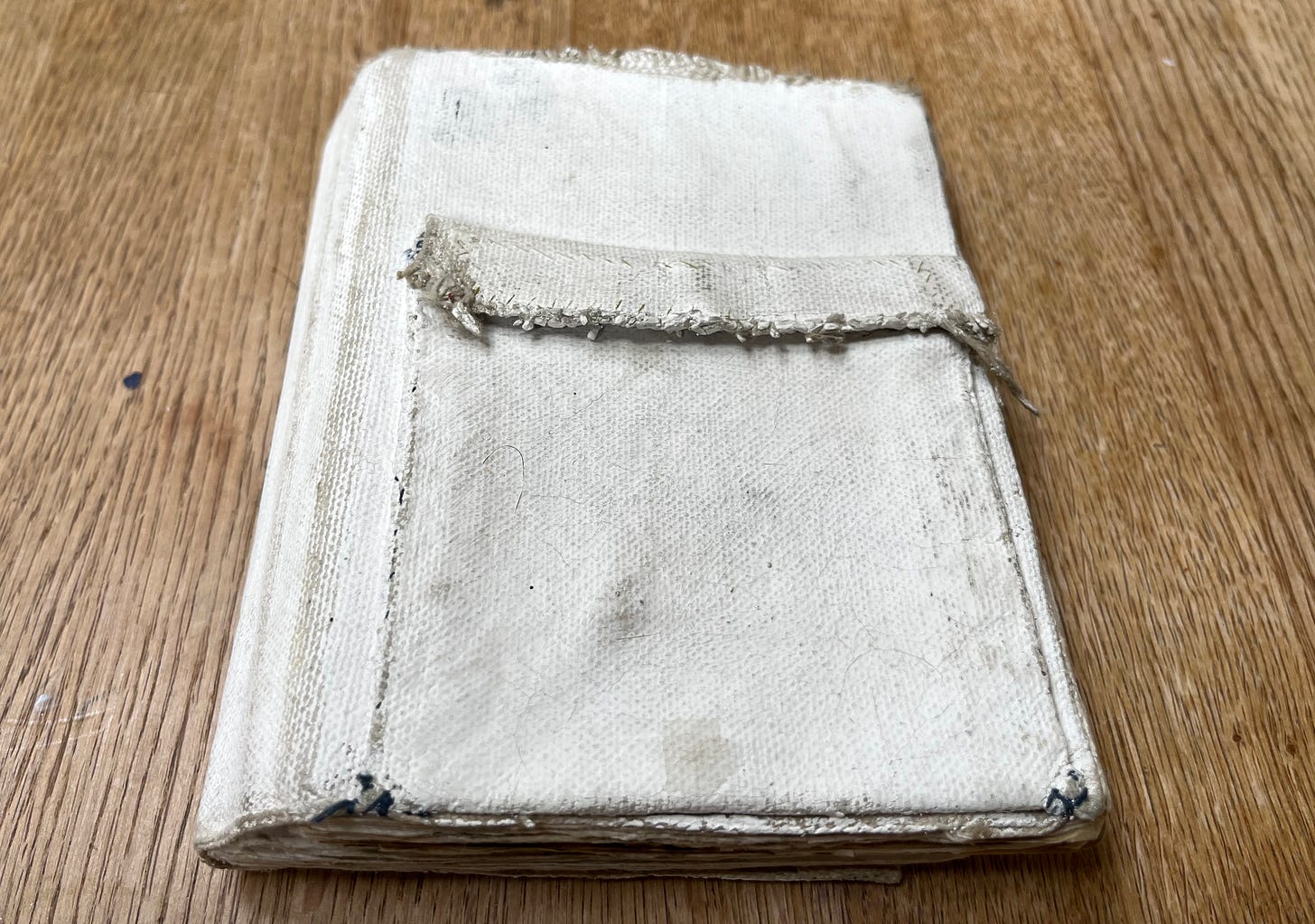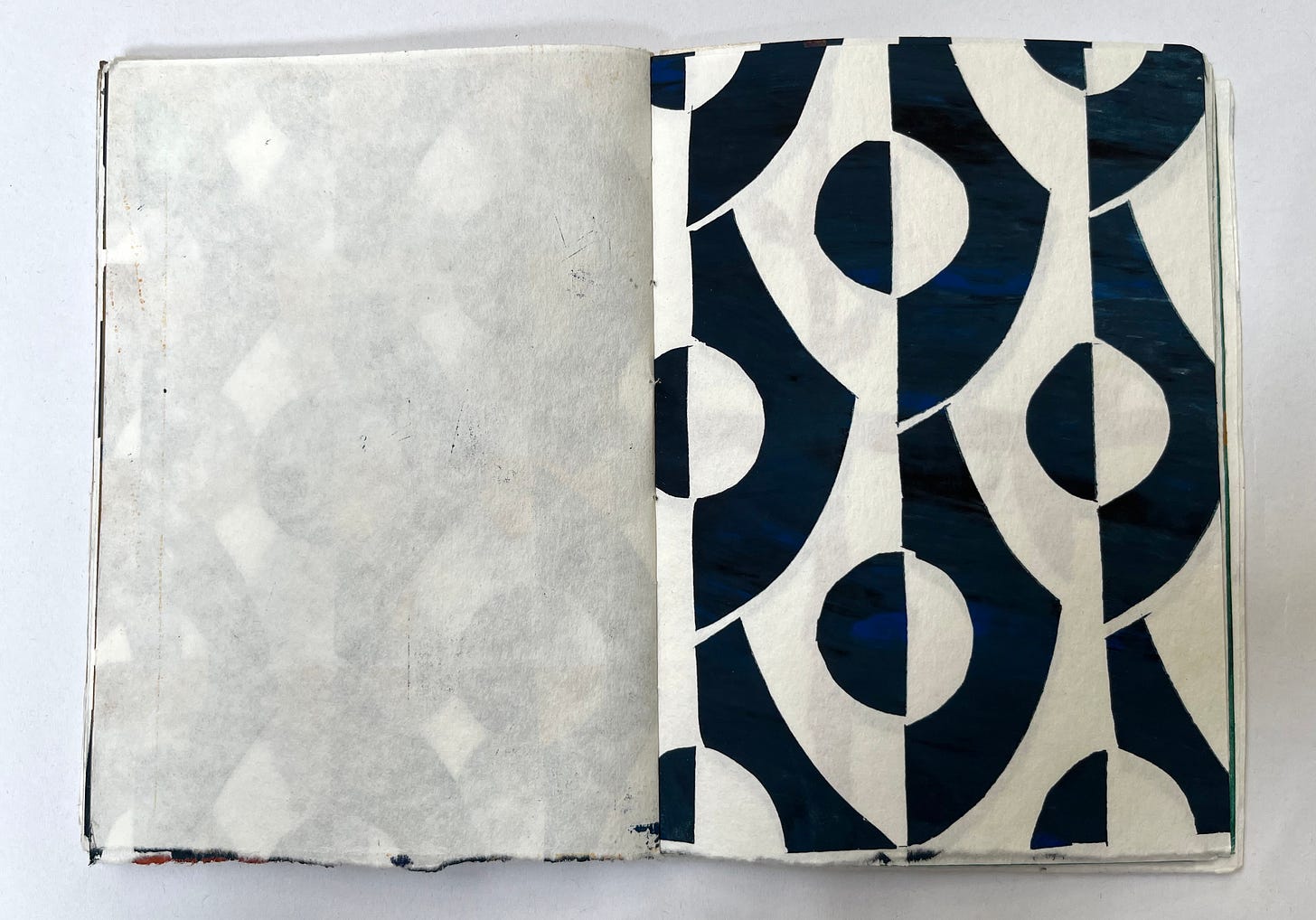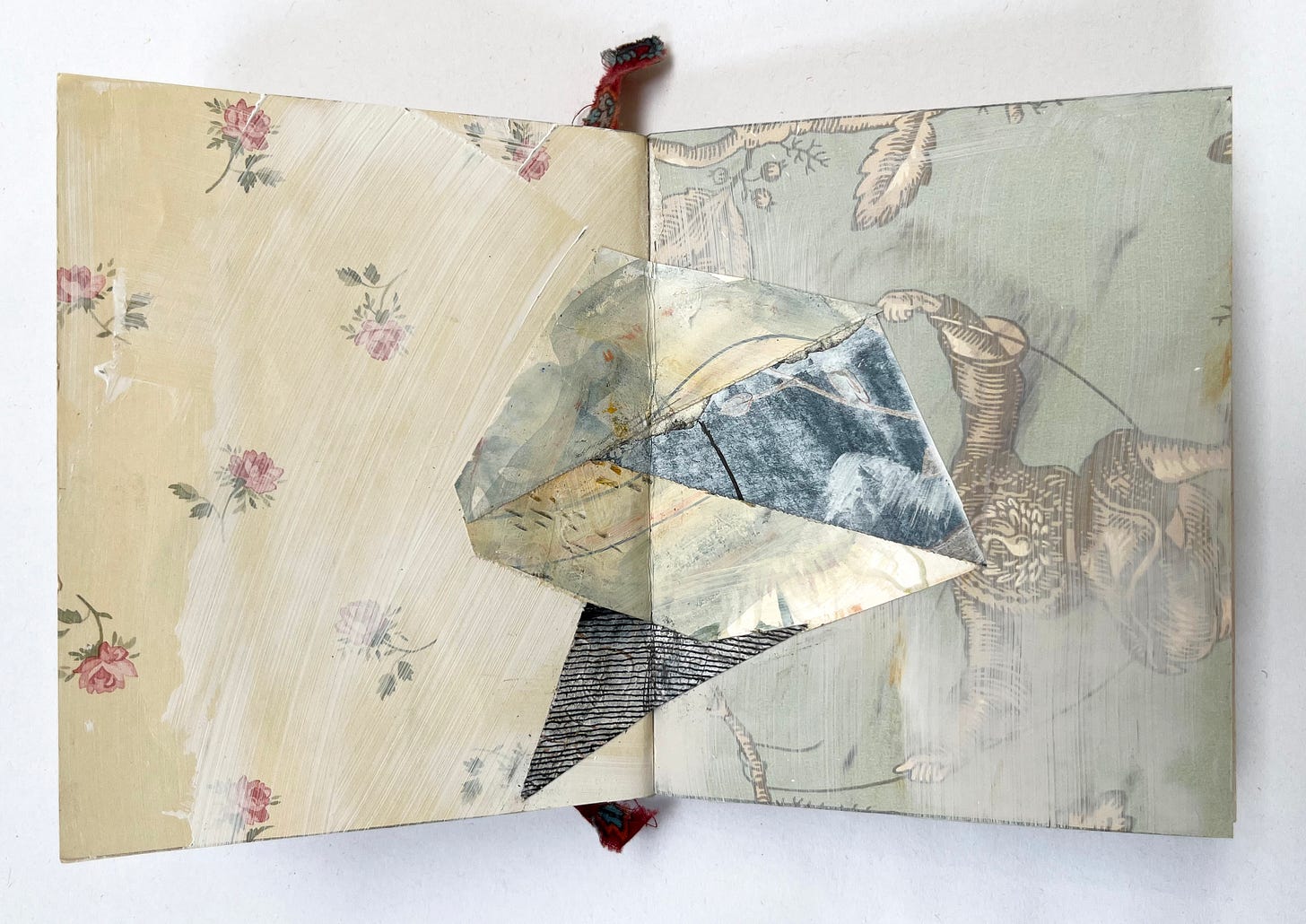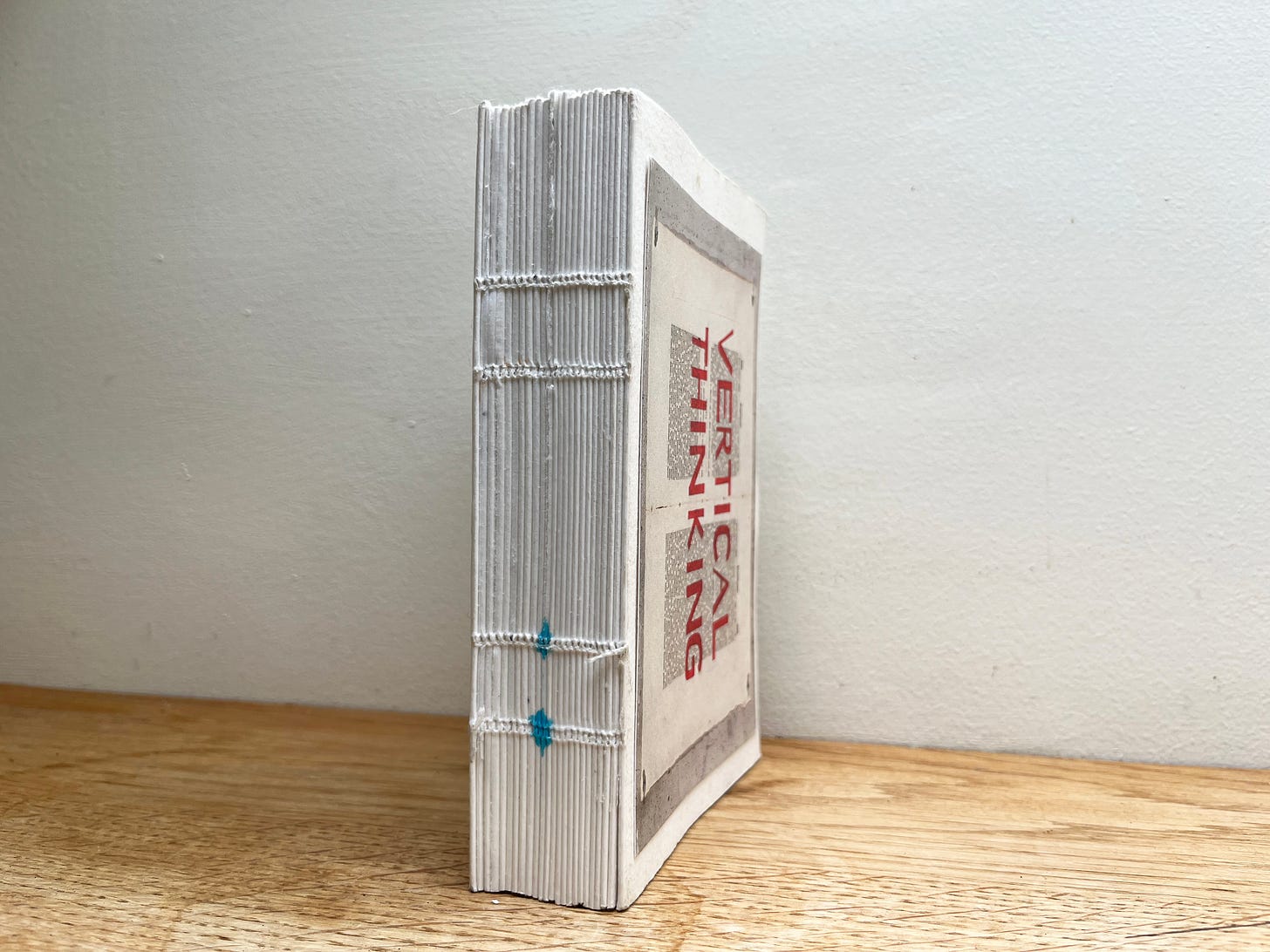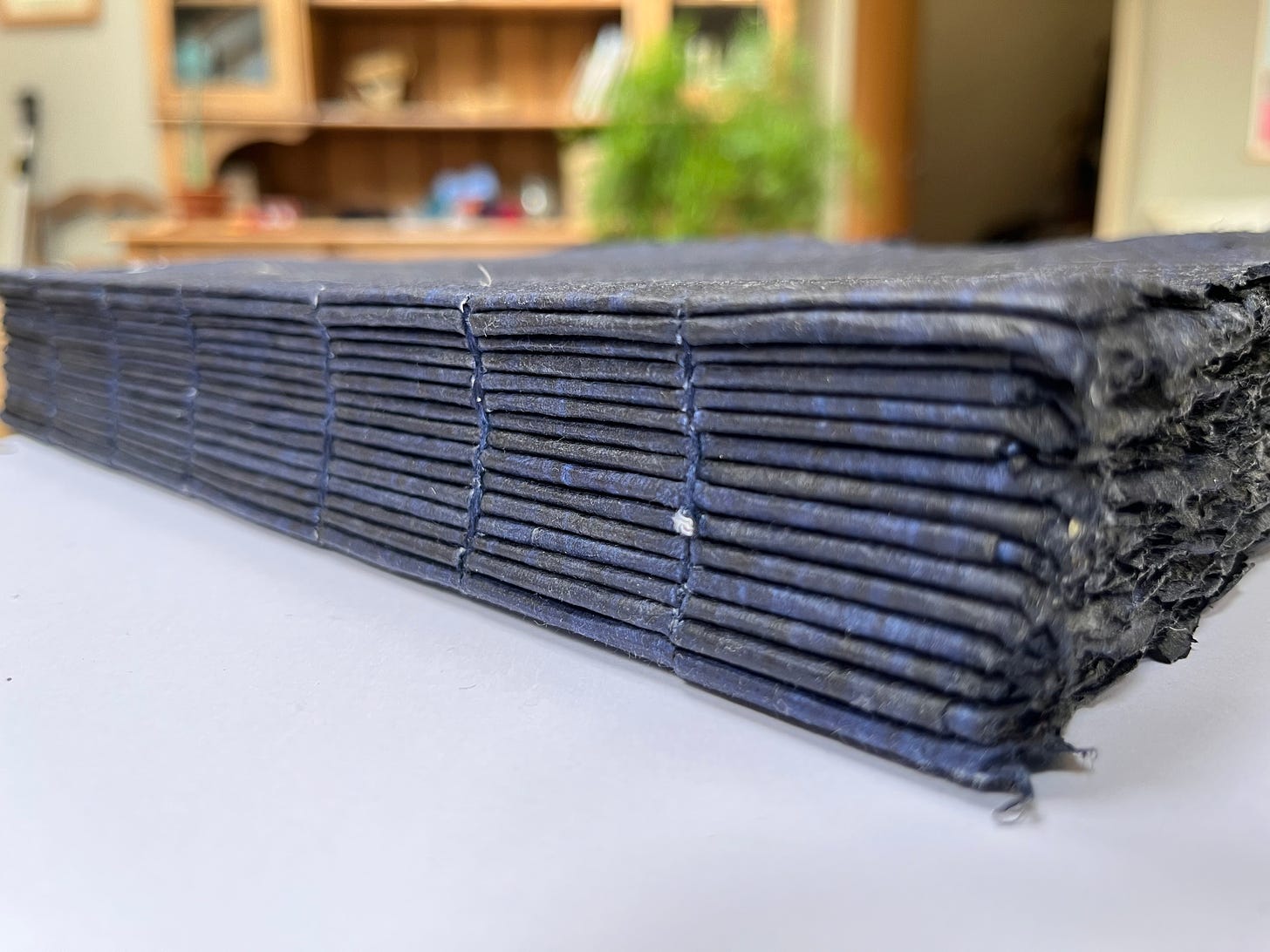As an art student back in the 1990’s, I didn’t go anywhere without a sketchbook. Not so unusual, except that the sketchbooks I carried with me were weighty and cumbersome. I only ever had one sketchbook on the go at any one time, and when it was time to think about a new book, I thought really carefully about what I wanted that sketchbook to be like. Perhaps it was because I did a Sculpture degree, but rather than go to the art shop and buy a book, I chose to make the books myself. This provided me with lots of opportunities for decision making. What kind of paper did I want? What size would it be? How chunky would the book be? And how would I bind it?
My relationship with my sketchbooks evolved over time, but began the moment they were dreamt up in my head. As hands and heart battled with materials, and the sketchbooks took shape as objects, the relationship deepened. By the time the sketchbook existed and I wrote my number inside (already the thought of losing the book was unbearable), I already had a sense that the book was part of me, and so working inside the sketchbook, filling it with my scrawls, was all pleasure.
Over time I stopped making books, and instead I began buying books (though with just as much consideration) and I started manipulating the covers or pages as part of the process of working in the sketchbooks. For example I might add pages of different ratio or size to the original book, or include types and textures of paper which would extend the kind of materials I might want to use in the book. We still advocate this process to schools today - making or manipulating bought sketchbooks increases the sense of ownership a student has over their sketchbook - and once they love their sketchbook, they want to use them.
But the transformation of materials into book, or manipulation of bought book into personalised book, not only nurtures ownership, it also kickstarts creative thinking. Making choices, especially by learning to listen to and follow your instinct, is a creative process. We need practice at being quiet enough to listen to our inner voice, and making or carefully choosing sketchbooks is a great place to start learning to listen and then act.
For the last few years I have moved to working with lots of sketchbooks at the same time. Yes, this is sometimes because I start a sketchbook, work in it and then move away from the ideas, or just don’t like the content in it, and then the book gets left on the shelf. But more often this is because I recognise that the qualities of the sketchbooks I want to work in at any one time vary, and having a selection of sketchbooks on a shelf which you can choose from, feels right. This means lots of half empty books, but returning to projects or ideas after a period of time, and working in old books, does feed into reflective practice - and you bring new ideas with you.
There is a huge pleasure in holding a sketchbook in your hands, whether it’s new and full of potential, or rich with work. It is a sensory, tactile experience - it also doesn’t cost a lot of money or cause anyone offence, so we think we should give ourselves permission (if we need it) to build a sketchbook collection which can sit quietly in the corner of the room, willing us to open them at every opportunity.
Soon we will think about what happens in the sketchbook, and how we make a regular sketchbook practice part of our Everyday School of Art journey, but for now:
We Invite You…
Begin to create or curate your collection of sketchbooks.
Let the journey begin - if you have a small instinct to make a book, listen to that instinct. Feed the instinct by being curious, asking questions which help you discover the potential of the book as a physical object. Take the leap, and start making your book - the act of making will calm your nervous system and this in turn will quieten you, so you can further listen to what’s next. Before you know it you will have centred yourself in the creative process.
In addition…
If you can, go to see the sketchbooks of other artists - physically in exhibitions or online. Feed your understanding of what sketchbooks can be BUT remember to take the time to be still and listen to your own instinct too.
Visit AccessArt’s collection of resources to help you think about making sketchbooks or transforming bought books (we recommend bought sketchbooks below).
We Recommend:
We really like the following manufactured sketchbooks:




